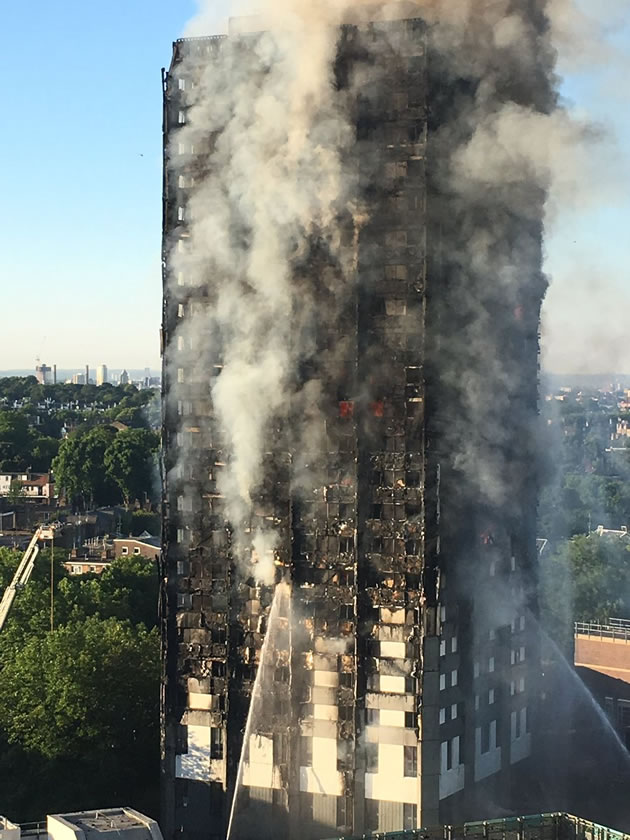'Fatal Design Flaw' Caused Grenfell Tower Tragedy
Chiswick architect and fire safety expert on why the blaze spread

Picture: @Natalie_Oxford
|
There is wide speculation on the causes of the Grenfell Tower tragedy, variously citing lack of alarm, detection, faulty evacuation advice – and the new external cladding.
On all the evidence, the cladding should be at the centre of this debate with all else subordinate. A critical measure to contain fire spread in a large building is to divide it into internal fire-resisting compartments. The tower was in concrete - concrete floors and concrete or block walls. A fire starting in a flat, which would be a compartment, or a balcony, should not have been able to spread far, nothing to compare with what happened.
The problem was that the inherent compartments inside were rendered irrelevant since the subsequent cladding wrap added outside almost certainly appears to have had a fatal design flaw. The application for the cladding made to the Kensington planning department is accompanied a cross-sectional drawing of the external wall. From inside to outside it shows in sequence the original existing wall, the new insulation, a gap and the metal outer sheeting. Plastics insulation is slow to ignite but will do so at elevated temperature and ferociously fuel a developing fire. There would have been nothing intrinsically wrong with using it provided there had been another a vital provision, “fire-stops”. These are fire-resisting inserts at intervals within a construction, here cladding, to prevent vertical and horizontal fire spread within the internal cavities. None appear on the drawing. As drawn, it looks as if a fire starting within the cladding (for whatever reason that will be later determined) would be free to funnel up inside the cladding assembly for the full height of the building, and also horizontally. Building fires produce very high temperatures, powerfully and rapidly forcing the spread. The images we have all seen were graphic. There cannot have been effective stopping, unless something else as yet undetermined came into play.
Internal sprinklers would not have helped here. Radiant heat from the external blaze would have threatened people inside long before setting off sprinklers; also sprinklers being inside would have done little or nothing to stop the spread which was outside. Advice to “stay put” was tragic here, but that is in the context of the cladding failure, not otherwise. Staying put is a valid strategy in some building types. The absence of an overall evacuation alarm is to be seen in the same context. There is no purpose in trying to evacuate all residents in tower block – provided the fire containment design is right.
Tragically, it cannot have been.
Esmond Reid, RIBA
June 18, 2017